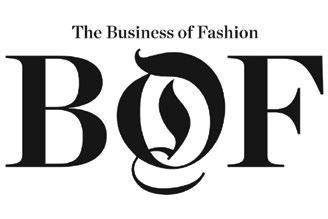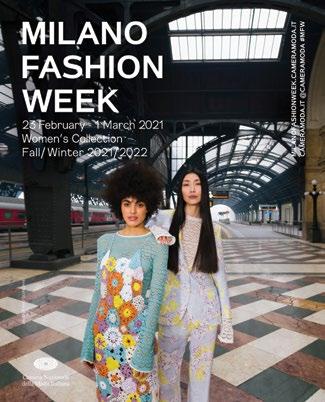
4 minute read
FASHION After 2020, Fashion industry moves towards a new future
FASHION
After 2020, Fashion industry moves towards a new future
By Andrea De Amicis
Covid19 has made 2020 a decidedly difficult year for all sectors but for Fashion. 2021 has also started in a challenging way, so companies must develop new strategies for the future. The State of Fashion 2021 report offers interesting reflections on this.
2020 was an extremely complicated year for all sectors but above all for Fashion. Covid19 has reduced global sales from 15 to 30%. Consumers have changed their habits and moved away from the industry, supply chains have been disrupted, and the year ended with many parts of the world in the throes of a new wave of infections. In the first months of 2021, the same scenario is playing out again and even intensifying, so companies necessarily must focus on constructive action and effective strategies, such as those identified in the The State of Fashion 2021 report. One of the positive trends of the future is sustainability, towards which all companies are increasingly turning, even those in luxury, which are proving to be more resilient during the crisis. In the latest digital edition of the Green Carpet Fashion Awards, fascinating collections were presented such as Upcycled by Miu Miu, with 80 one-piece dresses created from refined, unbranded clothes dating from the 30s through the 70s, sourced from vintage shops and markets around the world. Gucci has chosen recycled, ecological and sustainable materials for its Off The Grid collection, while Pinko Milano Fashion Week - Women 2021


has drawn on the garments of its old collections, to break them down and recreate new ones.
The State of Fashion 2021, the fifth annual report by The Business of Fashion and McKinsey & Company, is dedicated to these and other edifying ideas for the future, identifying ten themes that will guide the Fashion industry in 2021. 1, Living with the Virus reminds you to keep in mind that the future scenario is very uncertain because the movement of Covid19 changes continuously. Businesses need to be flexible and make decisions quickly. Data and analytics will play an important role in helping companies track changes in demand across geographies, categories, channels, and value segments.
2, Diminished Demand underlines that due to the current situation and growing unemployment, the demand for clothing has suffered a sharp decline. Many fashion companies are converting to medicalhealth, home, or goods production in their territory.

Courtesy McKinsey&Company
3, Digital Sprint sees online as a partial salvation to current problems. During the pandemic, web sales almost doubled, from 16 to 29%. Many brands have also seized new opportunities on the web such as live streaming, customer service video chat, and social shopping. Strong confirmation came from the last Milan Fashion Week for women, which took place from February 23rd to March 1st. Most of the brands showed their fall/winter 202122 collections in digital format, through runway videos and short artistic films. The edition was a great success, bringing in over 45 million views, more than any other fashion week in the world. Point 4, Seeking Justice, notes that consumers are more attentive to the behavior of brands towards employees. With the crisis generated by the pandemic, there has been a greater awareness of the plight of the most vulnerable in the sector. Campaigns against exploitation have sprung up and consumers now expect companies to offer more dignity, safety, and justice to fashion workers around the world. 5, Travel Interrupted recognizes a strong decrease in tourism shopping and directs companies to interact better with local consumers, while maintaining strategic investments in the markets that will see a stronger recovery.
6, Less is more was born from the concrete evidence that more products and collections do not necessarily mean better


Green Carpet Fashion Awards 2020
financial results. Companies should move towards simplicity, finding ways to increase sell-through and decrease inventory levels, adopting a demand-centric approach to assortment, while increasing flexible seasonal responsiveness, both for new products and restocking. 7, Opportunistic Investment encourages mergers and acquisitions between companies that are coping well with the crisis and those that risk bankruptcy or would stay in business only with government subsidies. 8, Deeper Partnerships is a consequence of the greater difficulties in procurement, which lead to abandoning provisional relationships in favor of more stable collaborations, which bring greater agility and responsibility. 9, Retail ROI demands a significant rethink of the downward spiral of physical retail. Retail has been a sector in crisis for years and will see many permanent store closures, which will continue to increase in the postpandemic period. Fashion players will have to envision new solutions, such as a potential shift of power to retailers and seamless digital integration. 10, Work Revolution, sees the emergence of a new working model, due to the combination at home and remote working, and also the need to invest in retraining talent to promote a greater sense of task-sharing and business purpose among employees.










